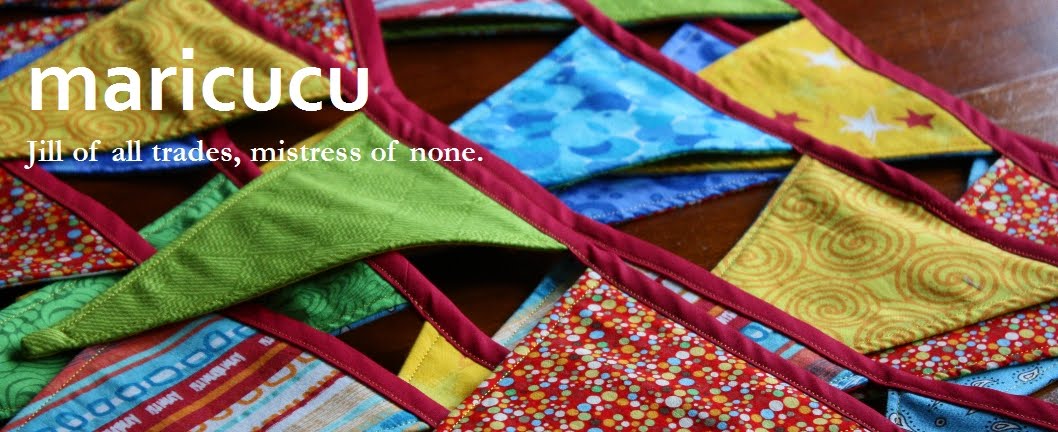Frijoles (free-hoh-less) as they say in some parts of Latin America or habichuelas (ah-bee-choo-eh-lus) as we say in Dominican Republic. It's all just beans but what a delicious plate of beans. I grew up eating red beans, garbanzo and pinto beans but black beans were more of a Cuban thing and one we enjoyed in restaurants or gorged on during the summer I worked at Pollo Tropical. Mr. Maricucu lived in Miami for nine years so by the time I met him he was pumped on Latin Food. Once we married, black beans and rice just became a natural staple of our menu. Oh and yes, just black beans and rice, with a savory onion salad/relish thing - a holdover from the days of Pollo Tropical where they set out chopped onion and olive oil/vinegar on the condiment table. My dad would be horrified to know I serve a meal without meat, he's pretty old school that way.
Black beans and rice is the official first food of all three of my children and one they love from the get go. What's not to love? Well seasoned beans that are creamy and rich over fluffy rice. You barely need gums to consume them if you've made them right. I used to use canned beans before we had children. I'll get more into that later. Now with two healthy boys and a baby that counts for 3/4 of an appetite it's just more efficient to make them from dried beans. Also, when made from dried, the beans come out a bit creamier and more tender. But don't let that stop you, canned or not these beans are delicious.
Black Beans
2 lbs dried black beans
several cups of water
4 bay leaves
salt to taste
3 medium onions
olive oil
vinegar
2 tablespoons dried oregano
2 tablespoons ground cumin
2 tablespoons apple cider vinegar
First for the soak. The night before I dump my beans into the salad spinner and fill with 3-4 inches of water over the level of the beans.
Put a lid (or in my case a plate) on the beans and let them soak.
The next day the beans will have grown in size and the soak water turned purplish/black. Drain the beans from the soak water (that's why I use the salad spinner) and dump them into a stock pot.
I cover the beans with about another 4-5 inches of water and add two bay leaves for every pound of beans. Super fussy baby was on my back in the mei tai so you'll see a couple of fuzzy pictures. My apologies in advance.
Bring the beans to a boil, then reduce the heat to low. Cover with a lid and simmer for an hour.
On to the chopping. Since the relish tastes best when it sits for a while, I chop the onions first and set aside both onions to saute for the beans as well as the relish. Chop about three medium sized onions and place half in a bowl. It all depends on how much your family loves onions.
Season the relish portion of the onions with a hefty bit of olive oil, vinegar and salt. It's okay if they're overdressed since the relish goes over the beans and you won't be eating this straight. Set aside for the onions to soften.
Place the other half of the onions in a saute pan and drizzle with two tablespoons of olive oil. Add a bit of salt, two tablespoons each of ground oregano and ground cumin.
Over medium high heat, saute the onions until softened.
The beans have simmered for an hour and are soft. Now you can salt them and I'll warn you they will need a good bit. Kind of like pasta.
Add the sauteed onion mix to the beans. Continue to simmer for 30-45 minutes. If you are using canned beans you can just dump about two to three cans in a pot, two cups of water, this onion mix and let it simmer as instructed. Dead simple.
After simmering the beans should be slightly thickened and reduced. If you like a thicker simmered bean, you can remove about 2 cups of beans + liquid and blend it in a blender. Or just mash some of the beans with your spoon against the side of the pot. The natural starches in the bean will be released and slightly thicken the mix. Again, taste and adjust the salt.
The final touch is about two tablespoons of vinegar, either apple cider or red wine vinegar. The vinegar brightens the flavor of the beans and while you won't be able to pinpoint the exact ingredient, you'll miss it if you leave it out.
Now it's time to eat. Serve yourself a nice fluffly pile of white rice.
Ladle on some beans.
Finally top with the onion relish.
Of course it never stays pretty for long. Stick a fork in, mix it up and enjoy! These beans freeze very well and it's why I usually make up the two pounds.

I have to stop reading your blog in the morning Marielle!! I spend all day thinking about cooking or sewing...
ReplyDeleteWhat's the benefit of cooking the onions and spices first instead of just putting them into the pot to cook with the beans?
Now I'm going to have to make some beans next week!
I was there! I saw the making of. I am pretty dang excited about it.
ReplyDeleteLowell you're a hoot. Cooking the onions caramelizes them and the dry spices sort of perk up in the oil too. It add a different dimension and a slight sweetness/richness to the beans. I hope you enjoy them!
ReplyDeleteMarin, LOL. Like being at woodstock huh? I'm sure the kids would disagree . . .